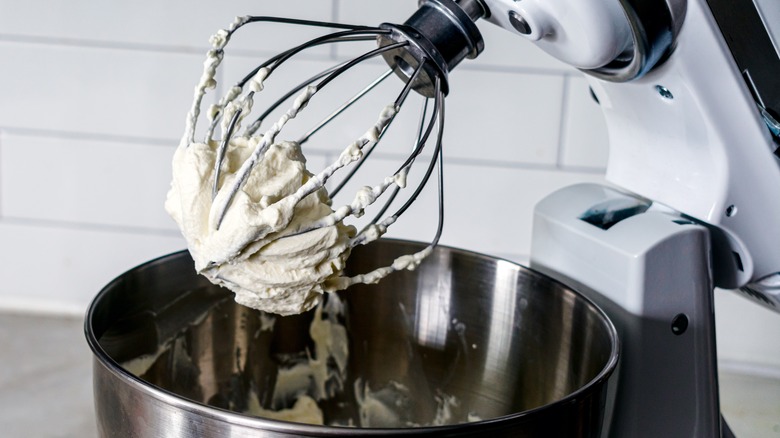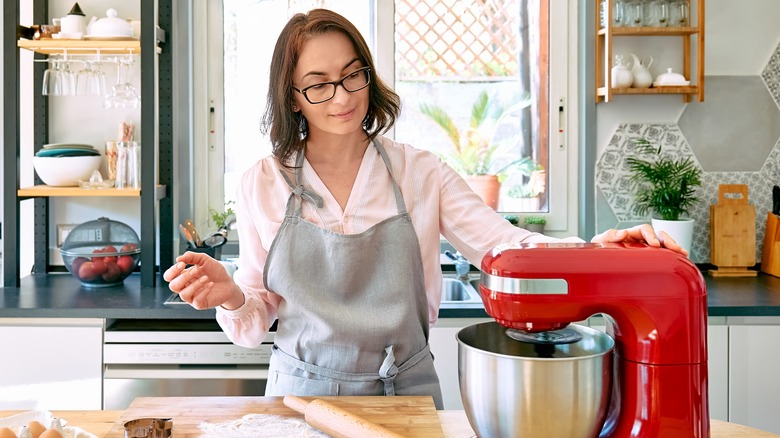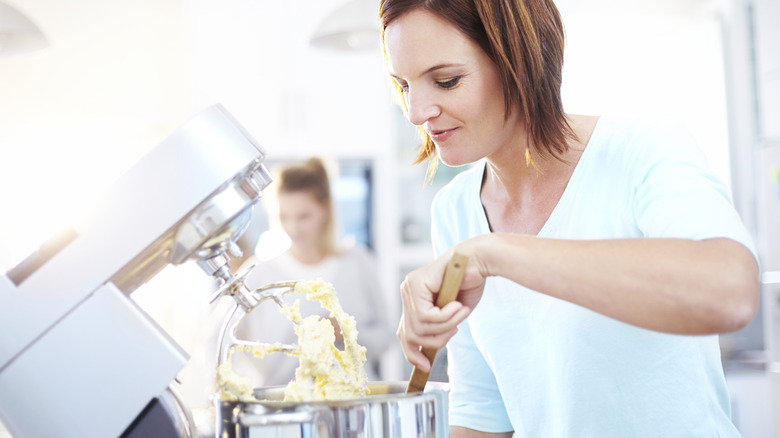If Your Stand Mixer Can't Reach Food At The Bottom Of The Bowl, Here's What To Do
Stand mixers are the workhorses of many kitchens. They make arduous tasks like whipping egg whites, giving life to a creamy frosting, and even shredding meat a breeze. Even for simple tasks that don't require the power of a stand mixer, they seem to work their way into most home bakers' routines and remain there firmly.
If you happened to purchase one of these much-loved tools only to find disappointing results, then the culprit may simply be incorrect settings. One of the most common problems users experience with their stand mixer is that the attachments don't quite reach the bottom of the bowl. While there are many possible explanations as to why this is happening, the severity of it can easily be diagnosed with just a dime.
The dime test is a great way to judge just how far your stand mixer's attachments are from the bottom of the bowl. You don't want the attachments to be touching the bottom of your bowl at all times, and a dime's narrow 1/16th inch thickness ensures that there will still be a gap as your mixer does all the work. However, it should only be used in metal bowls and never in glass or ceramic.
How to use a dime to adjust stand mixer height
Performing a dime test is easy. Simply start your stand mixer on low with an attachment, and toss a dime in the bowl. What you're hoping to see is the attachment occasionally moving the dime less than an inch each time it circulates through the bowl. If the attachment doesn't hit the dime at all then you'll need to adjust your mixer's height.
This process may be different depending on your mixer, but tilt-head models often have an adjustment screw that is visible when the head is tilted back. Turning this screw clockwise should lower the attachment closer to the bowl. Carefully do this one-quarter turn at a time until the attachment is at a good height.
Stand mixers that raise the bowl up to the mixer head will have a similar screw that is visible while the bowl is in the down position. Adjust it similarly to the tilt-head models, until reaching the correct height.
What if it's not getting the sides of the bowl?
Of course, not hitting the bottom of the bowl isn't the only possible problem you can encounter when using a stand mixer. Another issue is when the sides of the bowl aren't being incorporated into the mixture. This will hopefully be improved by adjusting your attachment height because it will be making better contact with the bowl's contents than before.
While a good mixer can do a lot, it can't do it all on its own; and even the best stand mixers will still require you to scrape down the sides of the bowl after adding each ingredient. This is just one of the reasons why bowl scrapers are such invaluable tools for bakers. You can find mixer paddles with rubber scrapers on the edges, but these might not always get the job done. Instead, it's easiest just to stop the mix for a moment to make sure all of your ingredients are being incorporated consistently.
It might seem like an extra step, but scraping down the bowl has its benefits. It makes sure that the entire batter or dough is uniform and that you aren't leaving elements like fat or flour stuck to the bottom or sides of your bowl. This can result in inconsistent cookies or cakes because they're essentially missing some of their ingredients.


